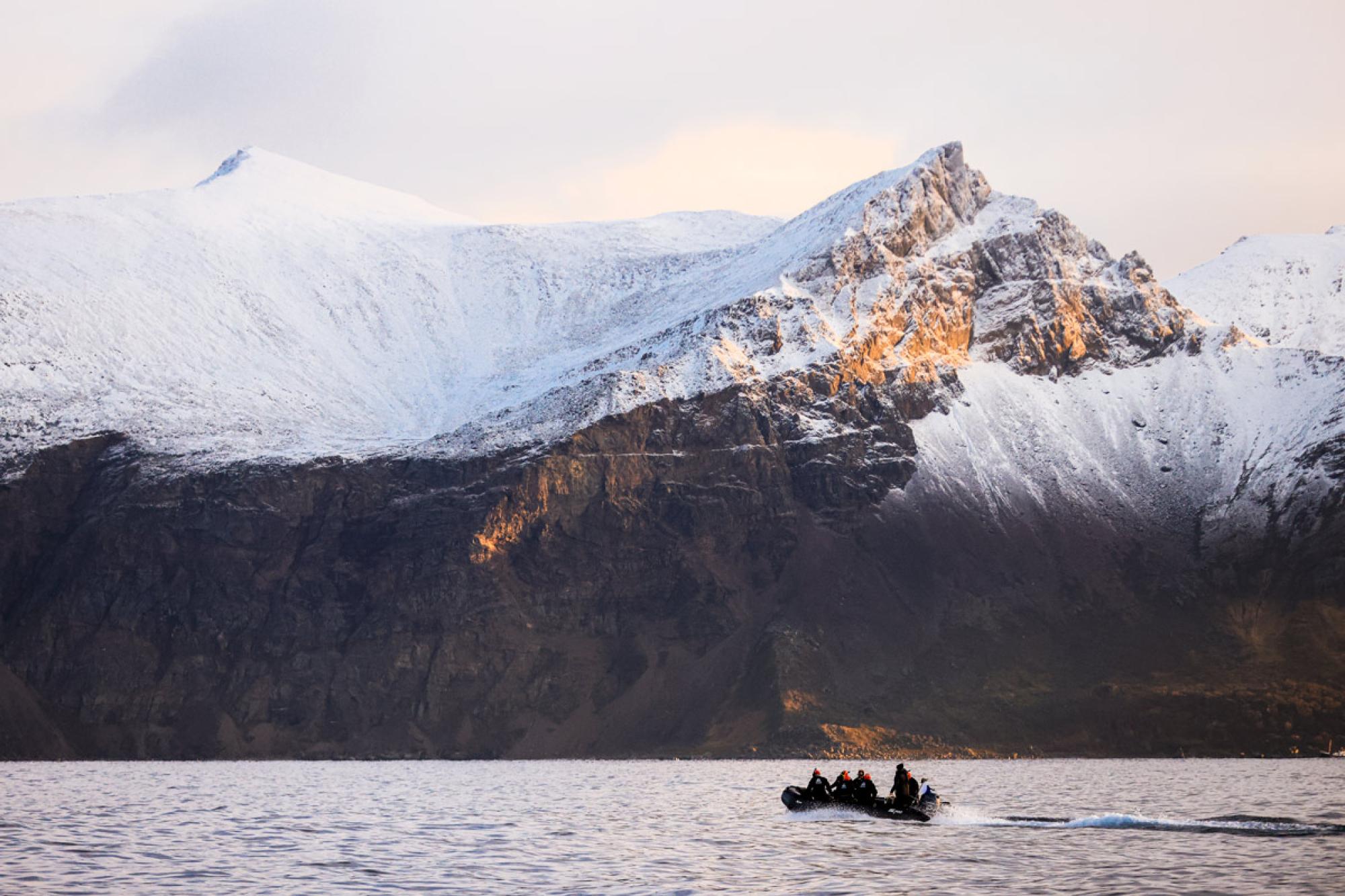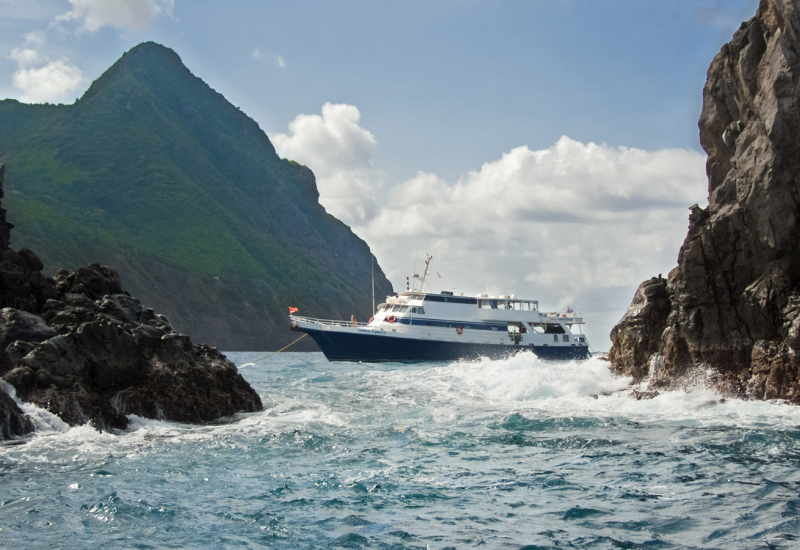Swimming With Whales: Does Human Activity Affect Orcas?
The November air in Norway tastes crisp and fresh. Snow dusts the ground and buoys my spirits. I wait outside the airport for a taxi, alone in the dark, quiet night. As a soft rain patters down on me, excitement pricks through my skin. After three years of anticipation, planning and pandemic delays, I’ve finally made it.
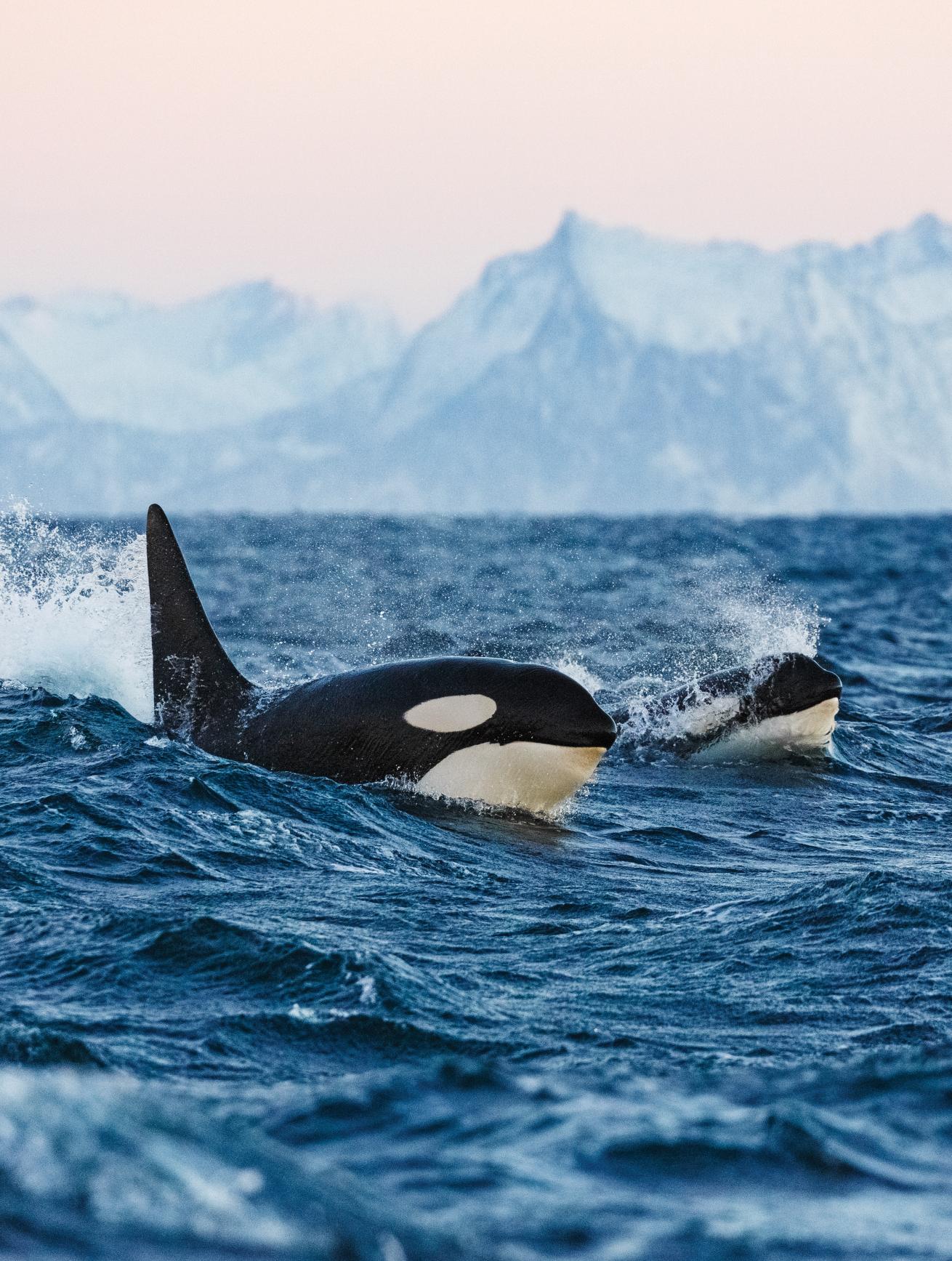
BRANDON COLEOrcas migrate to Norway to feed and teach their young.
Tromsø lies 217 miles north of the Arctic Circle. Famous as a prime location for viewing aurora borealis, the urban hub is also known as the “Gateway to the Arctic.” A taxi drives me past the quaint, wooden storefronts in the town center to a camping lodge across the river.
The Task At Hand
I am the last of 14 women to arrive for a weeklong scientific and arts expedition aboard M/V Explorer, a 152-foot tourist and research vessel operated by Waterproof Expeditions.
The lodge is our home base for last-minute preparations. The taxi drops me off well past midnight, and everyone is asleep. I linger in the common area, staring at my cabin mate’s door. I wonder if we’ll get along. Her name is Dr. Louise Edwards, and she has a very cool, edgy pixie haircut; that’s all I know.
I pull out my camera and remember that this is a scientific expedition. We’re here to document how freerange orcas that migrate into Norway’s fjords interact with snorkelers. I’m also the media specialist for the 2022 Sea Women Expedition in Norway, so I’ll liaise with the press and disseminate news from the ship.
Building Belonging
Lou—as Edwards likes to be called—greets me in the morning with a warm embrace. “I’m a hugger. I hope you don’t mind,” she chirps in an English-meets-Canadian accent. I think we’ll get along just fine.
Our cohort files into a conference room next to the camping lodge. For most, this is our first time meeting each other. Within the hour, we’re cozied around a couch together, sharing deep hopes, fears and insecurities.
For many, this is also their first scientific expedition, and imposter syndrome has snuck into the room. No matter: “We’re artists doing science and scientists doing art,” encourages expedition leader Susan Eaton. “We’re completely STEAM [science, technology, engineering, art and math] here.”
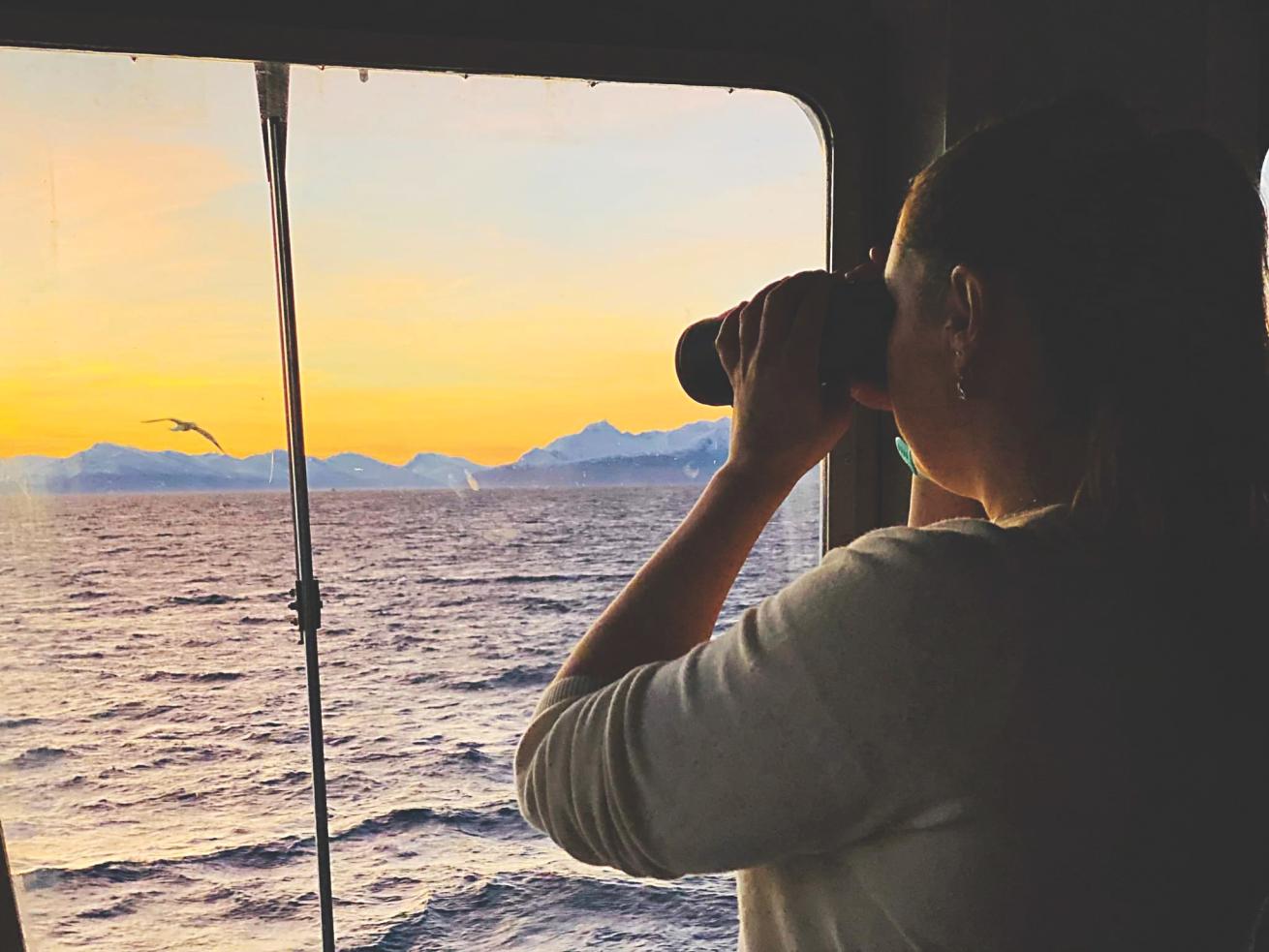
CHRISTINE KEATINGExpedition leader Debbie Bouma peers from the bridge through binoculars at a fjord bathed in orange light.
The convergence of science and art, and anyone’s ability to contribute to either or both competently and meaningfully, are primary reasons why this all-women’s expedition exists at all. “People have to feel safe to try and fail. That matters—in science, art and exploring,” Eaton says.
“I’ve been on a joy journey this year,” I share when it’s my turn. “This week, I want to explore and feel and do whatever’s joyful—to really be here.” My willing candor surprises me. I love my work, but in my passion for it, I’d forgotten how to enjoy myself. I really want to change that. The tiniest tears well up in the corners of my eyes.
Several confess their fears about the orcas—would we be safe? A few of the moms share their anxieties about being away from family for so long and that it seems selfish to be here. Many struggle to feel like they deserve and belong on such a big adventure.
I immediately fall in love with the depth and nuance of each person. Every feeling is valid and validated. We discover endless synchronicities. We also realize how uniquely special it is to be three generations of women, from 20 to 70 years old, learning from each other and sharing generational knowledge while studying matriarchal orcas doing the same thing within their pods.
Related Reading: Think Beyond Pink
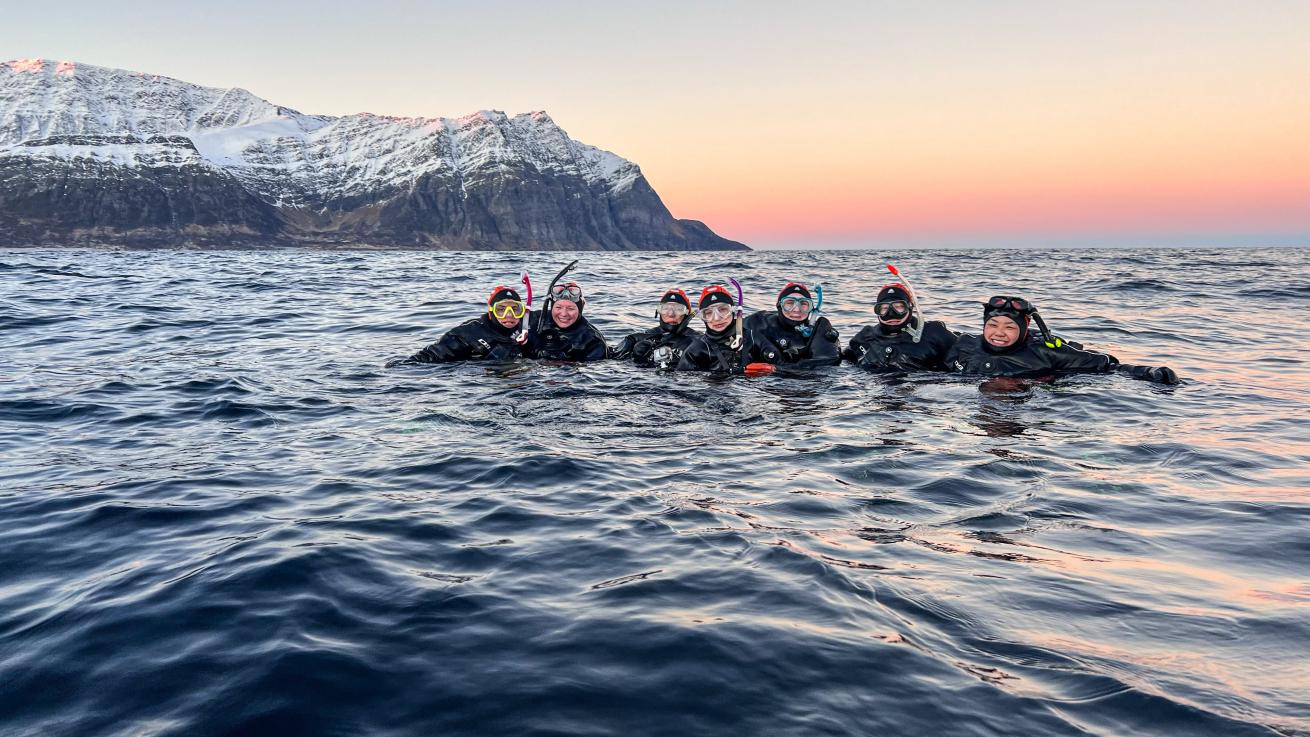
DEBBIE BOUMA/WILD ENCOUNTERSThe author, right, and her Zodiac team float joyfully in the Arctic waters
All Aboard
After three days indoors, we board Explorer. It’s the biggest ship I’ve ever journeyed on—a magnificent vessel designed to withstand harsh polar conditions. We tour the three decks, beautiful lounge and hot tub and sauna under the stars.
We get underway. In the waning hours of daylight— just a few each day—dawn turns directly into dusk. Once we begin cruising, the orange-pink skies add a muted brilliance to the otherwise stark, dark-and-white landscape of mountains, snow and water. I hadn’t noticed these citrusy hues of Arctic winter from the conference room, but on the ship, I can’t stop staring at the beauty of Arctic winter.
Soon, we depart for Fugløya Island and the remote fjords north of Tromsø. These long, narrow and deep waterways reach far inland. Cut by glaciers millennia ago, they’re usually U-shaped valleys surrounded by steep rock walls. In the winter, snow caps the tallest peaks.
Related Reading: Glowing Fish That Produce Antifreeze Discovered in the Arctic
Following The Fish
Because of their physical characteristics, fjords host a variety of marine life. Each summer, long days bathe the waters in ample sunlight. This drives phytoplankton blooms that draw fish into the fjords. Annually, billions of herring come into the protected inlets to feed. They become fatty and rich in protein, and orcas and humpbacks migrate from Iceland and the Caribbean, respectively, to eat these extra-nutritious fish, explains marine mammal expert and expedition guide Debbie Bouma.
During her briefing, Bouma also assuages our unspoken fears about getting in the water. The orcas we’ll encounter primarily eat herring and mackerel—allowing humans and humpbacks to get rather close in the water without fear, Bouma says. It’s amazing, she promises.
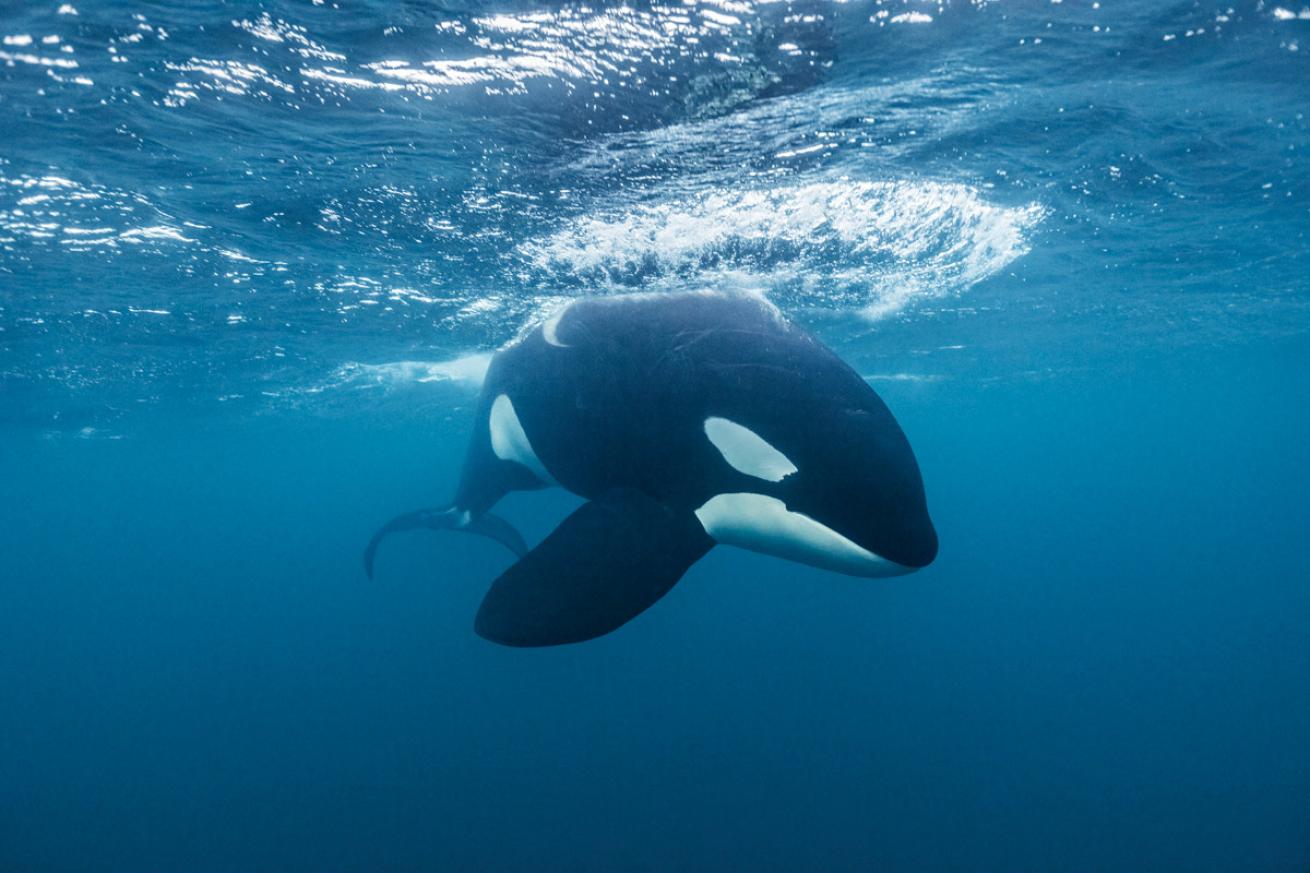
BRANDON COLEAn adult male orca (Orcinus orca)
Norway’s orcas hunt by carousel feeding, a behavior unique to this region. A pod will encircle a shoal of herring using strings of bubbles and the whites of their bellies to disorient the fish. They force the small, silvery fish into a baitball that they drive toward the surface or cliff walls. Then, individual orcas slap at the baitball with their tail flukes, paralyzing or killing several fish at a time and eating them, one by one, until everything is gone.
Learning about this “whale culture” from Bouma, I immediately compare how female orcas teach their young to eat against scenes from my own life. The moms, aunts and grandmas in my family also gather around the kitchen, teaching us kids how to tightly roll egg rolls or get the spices mixed just right for traditional Vietnamese soup. We’re just like the orcas, I think.
Related Reading: Orca Moms ‘Baby’ Adult Sons and Forego Future Offspring to Care for Them
Tips For Photographing Orcas In Norway
Ideal orca season runs from the end of October until mid-January. Remember: In December, there is hardly any light.
Make sure all equipment is rated for extremely cold weather.
Keep spare batteries in socks or stored with hand warmers to prevent fast drainage.
Wear 1- to 2-pound ankle weights while snorkeling to keep your feet under you.
The water is dark, and orcas are darker than other marine life. Set your aperture wide to capture as much light as possible.
Have the right lenses to cope with low-light conditions.
Shoot orcas, whales and other megafauna with wide-angle lenses.
In the water, use a GoPro or other action camera in a housing with lowlight settings. Take continuous vide to ensure you don’t miss any of the action, and pull stills from your footage.
Getting Ready To Go
Soon, it’s time to get in the water. “Do you think we’ll see anything?” I ask my cabin mate, author and explorer Ashley Bugge, as we hurriedly struggle into our drysuits. “Only one way to find out,” she smiles back at me as she flies out the door and up the stairs to the dive deck.
Although we’re not scuba or freediving, we’re outfitted with drysuits and undergarments. On deck, the expedition guides zip us up and check our seals. We’re clunky and slow, and bursting with excitement. The final touch is a bright-orange 10 mm hood to help our drivers spot us against the dark waters.

DEBBIE BOUMA/WILD ENCOUNTERSHumpback whales lunge-feed in a fjord while snorkelers observe from a distance
My First Snorkeling Encounter
On the Zodiacs, we cruise alongside resting, slow-moving or actively feeding pods. It’s best to enter the water when animals are so busy they don’t care about us at all, Bouma explains. Dorsal fins break the surface around us, and whale spouts puff and spray audibly into the air. The idea is to drop quietly into the water, allowing them to swim past us.
Bouma signals to us to flip our legs outside the Zodiac. My mind is racing and empty at the same time; I watch and wait.
“Go!” she whispers, urging us over the side. I dip in, anticipating the cold, whales and everything I might see. The deep emerald water is so dark, it looks like empty space instead of liquid. It’s fresh, but not freezing, which I’m happy about. It reminds me of diving in California winter.
Out of the darkness, blobs of white appear. I squint harder. White eye and saddle patches emerge from the black. An orca! Two! Three! My heartbeat quickens. I forget to breathe again as they approach. Later, while reviewing my underwater videos, it’s clear orcas move quickly. And yet, in this exquisite moment, time stands still as we glide past each other. It’s surreal and cinematic.
Orca Behavioral Science
Norway is the only place in the world where “swim with” orca programs are conducted legally, so the number of operators and vessels has multiplied in recent years. Most programs are similar to ours—drysuit snorkeling at the surface. This doesn’t require a dive certification.
The impact of this many people and whales together has not been researched. A limited study from 2016 found Norwegian orcas to be very receptive to encounters with humans. They display eight interactive and affiliative (friendly) behaviors. Our expedition goal is to add to that research by filming how orcas and whales react to us entering the water and floating nearby their swim paths.
In the coming months, marine biologist and expedition co-leader Sarah Neill will study our footage and audio recordings to determine if and how human presence changes the animals’ behaviors. She hopes to turn the data into a master’s thesis. The wider goal is to provide guidance to Norway’s small, unregulated whale-watching industry and to support more responsible eco-tourism.
Related Reading: Navigating a Safer Future for Whales
Oceanic Science
During our three-week ocean research expedition, we also carry out complementary scientific experiments on the broader Arctic environment. Every morning, before dawn, I bundle up to help the science team gather data on deck.
“The overarching goal of the project is to identify biodiversity that exists in this region of the North Atlantic,” says Dr. Paola Marignani, a molecular biologist and the expedition’s chief scientist. Marignani trained us to accurately collect water samples from various locations and depths in the fjords. We extract environmental DNA, or “eDNA,” by pulling the seawater across paper filters that separate out biological material. These samples will be sequenced to obtain an overview of what lives in the water, she explains.
As we finish up, sun rays break over the mountains, and I bask in the Arctic orange. I don’t know why, but it feeds my soul.
Then, it’s time to measure the ocean itself—the physical elements of the water. “These are very important because temperature and salinity affect everything,” Dr. Kate Larkin, the expedition’s oceanographer, explains. Paired with Marignani’s eDNA samples, the physical ocean attributes could explain how physical and chemical changes affect speciation—which species we find in the fjords. With climate change, microplastic pollution and other anthropogenic influences on this region, “we need to know what’s in the water to be able to ensure that what we’re doing as humans isn’t changing that diversity,” Marignani says.
I’m intrigued by this interaction of the physical and biological sciences. “Science is fun!” Marignani insists, exuberantly, with each sample taken. She’s right—science has never felt so lighthearted and approachable to me.
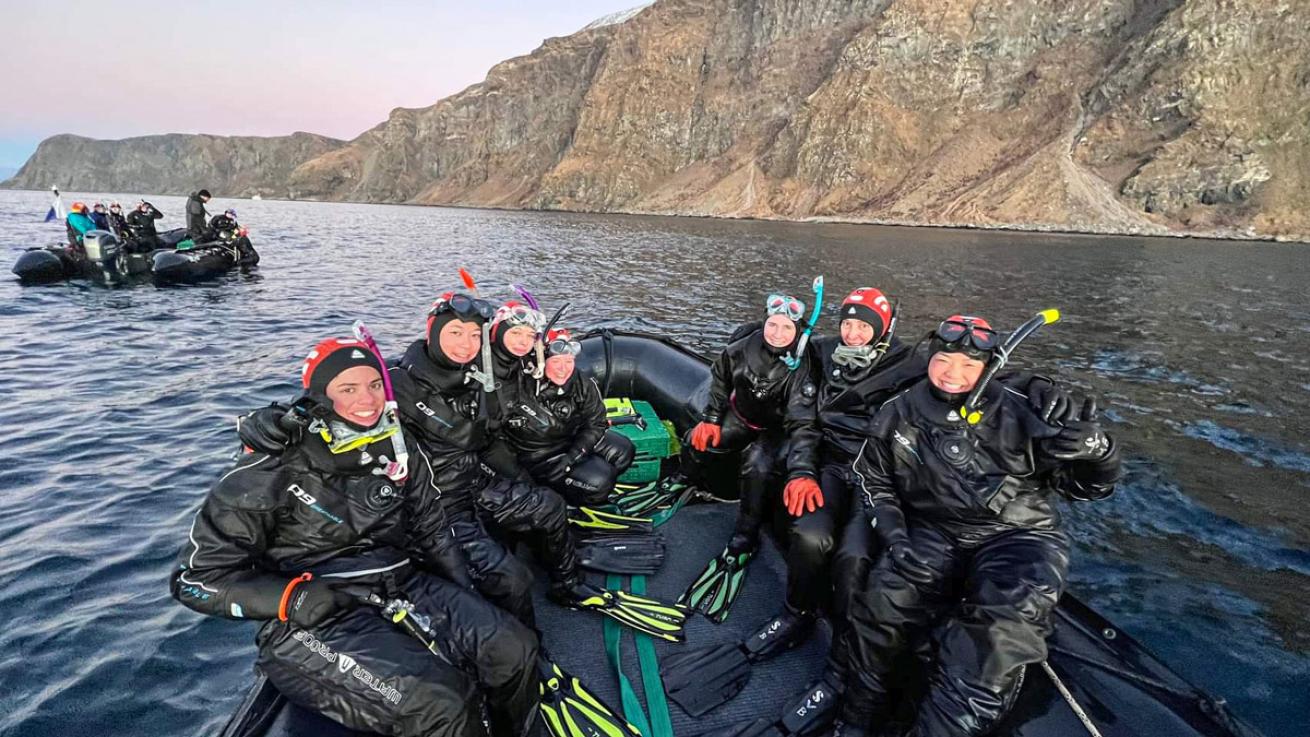
TIFFANY DUONGThe expedition team navigates the fjords in a rigid inflatable boat.
Moments Of Joy
The week is generously peppered with moments of joy and peace.
“I remember coming back on the Zodiac at the end of the first day, coming toward the ship,” Larkin says later. “I looked at the mountains and that sunset, and I was just crying. I think I found peace, and I finally knew I deserved to be here.”
One day, the winds are too strong for us to launch the Zodiacs. Wrapped in my parka, I wander to the bow and stand there, alone. Icy wind roars past me, strong enough to support my full body weight. It whips through my hair, and I grin a huge, toothy smile. I belong here, in the Arctic, on an expedition ship, I suddenly think. I feel drunk with joy. I love this. I need this.
I moved to the Florida Keys to escape the cold, and I haven’t engaged with proper science since high school. Now, I’m daydreaming about replicating this? I sketch the scene into my journal so I don’t forget these yearnings for freedom and adventure.
The anticipation before each drop into the water fills me with wonder and excitement. Sometimes, whales and orcas pass right by us with little acknowledgment; other individuals curiously approach with head tilts or direct eye contact. It’s transfixing.
“When I close my eyes and think of the expedition, I think of a mom and baby humpback just feet under me, within arm’s reach,” Bugge says later. “The baby was closest. I saw its eyeball; I saw the deformations of its skin. I saw it, and it saw me. It was humbling.”
As our week nears the end, I strive desperately to imprint this place, and how it makes me feel, onto my heart. There’s an immensity to the Arctic, and a quiet that penetrates the soul, that I don’t want to forget.
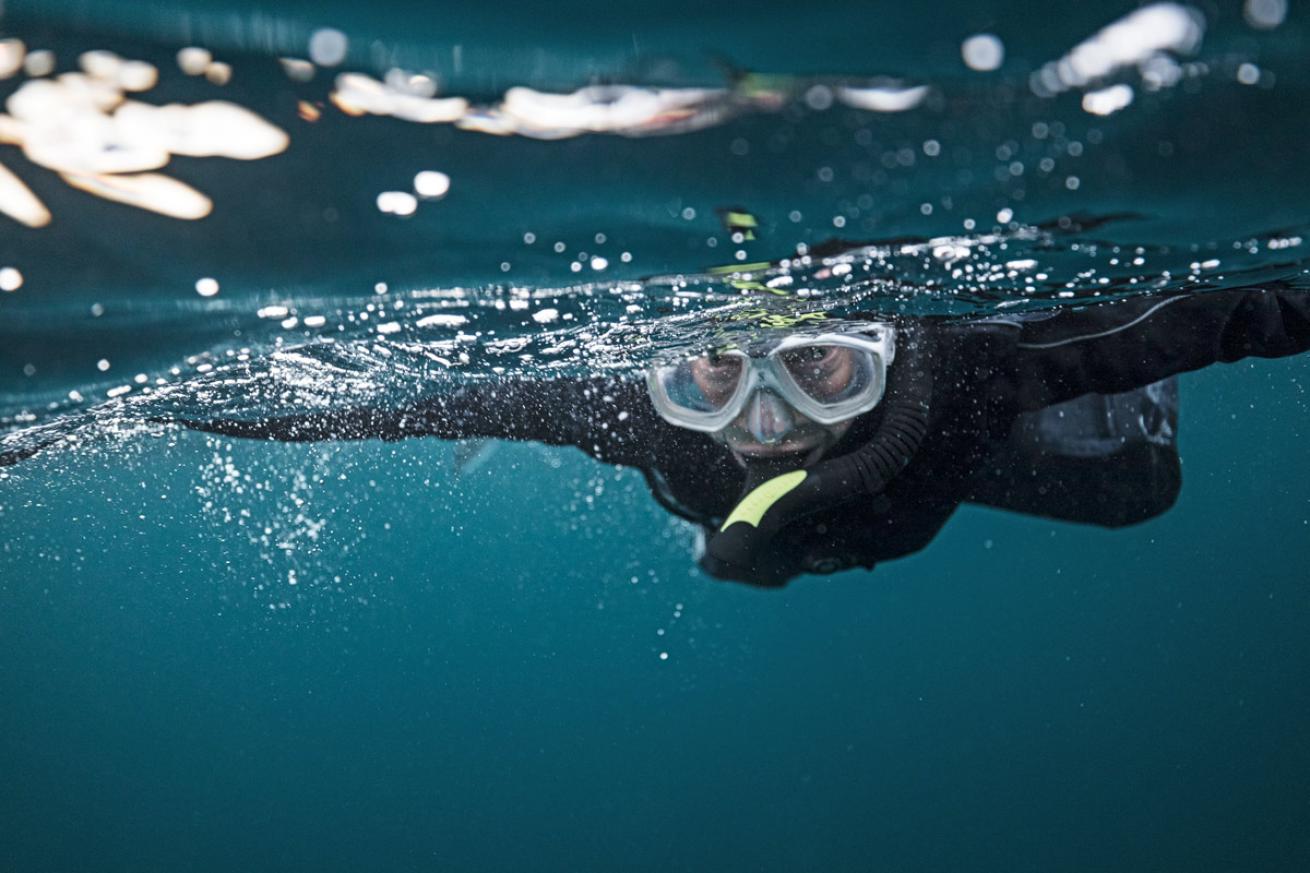
EMMA KHANDonning drysuits to plunge into the Arctic waters
The Real Magic Of The Arctic
Months after the expedition, I realize the orcas didn’t change me nearly as much as my teammates have.
This community, this sisterhood, is the unexpected treasure that’s emerged from the darkness. We still speak daily and encourage each other to discover and fulfill our greatest potential.
I’ve since identified what work I want to do next: expedition hosting. I want to make concrete what I felt on the bow that one day.
I’ve also embarked on a new creative endeavor with Edwards and Aya Walraven, another talented teammate with amazing hair. We’re creating a video game that transforms our expedition into a VR experience. Found in the Fjords challenges players to think like an orca and commit to protecting the ocean. It’s one of my favorite projects, and I owe it all to these incredible women and the whales that brought us together.

